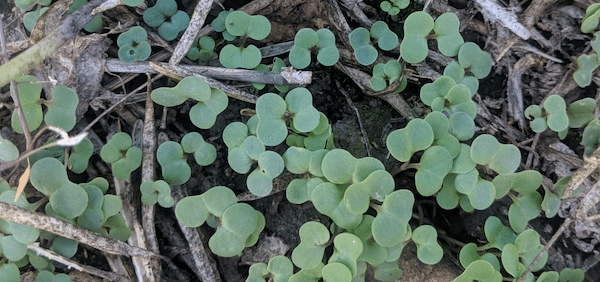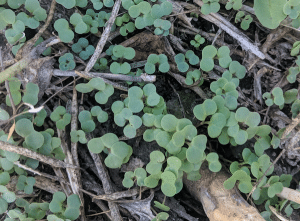If cereal and canola volunteers germinate in the fall and have the potential for significant growth, should you spray them?
The general advice is to leave them. As annuals, frost and winter will kill off most of them, and any money spent trying to control these volunteers would be wasted.
Possible exceptions that may change your approach:
Nutrients. Volunteers will take up nutrients. If volunteers are concentrated in windrows, the nutrients bound in these plants will not be available until the biomass degrades. This could create uneven nutrient availability next spring. The longer you let the volunteers grow, the more nutrients they tie up, but again, those nutrients are not lost, just held temporarily in the biomass.
Clubroot. Canola plants can start to form clubroot galls about three weeks after emergence. Galls allowed to form in the fall will contribute to spore levels in those fields.
Green bridge. Cereal volunteers can form a green bridge for diseases, allowing those diseases to spread to nearby winter cereal fields.
If growers decide that these reasons warrant a spray of volunteers, note that fall weed control can be a very good strategy for winter annual and perennial weeds, and that many tank mixes approved for fall control can also control the volunteers. (Exception: Straight glyphosate applied to RR canola volunteers.)

